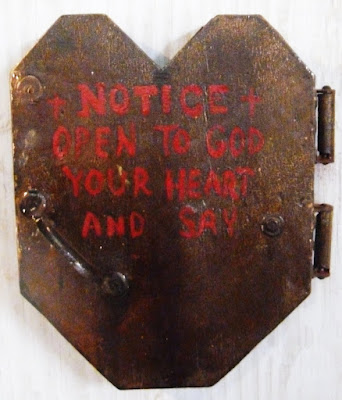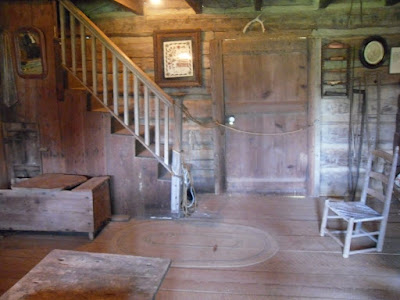The French publisher Les Éditions de Minuit is strongly associated with the nouveau roman, and has, for example, Alain Robbe-Grillet, Nathalie Sarraute, Claude Simon, Michel Butor, and Marguerite Duras in its portfolio. Its post-nouveau roman generation of writers include Marie NDiaye, Éric Chevillard, Jean-Philippe Toussaint...and Jean Echenoz.
At the beginning of Echenoz's Un an (1997), Victoire leaves Paris as soon as she awakens to find her boyfriend dead: she has no recollection of the previous evening, and, fearing that she may have killed Félix, draws all her money out of the bank and boards a train at Montparnasse station. With no apparent future intentions, she arrives at St-Jean-de-Luz in the extreme south-west of France, stays in hotels and rents a place until she gets robbed of nearly all her money, buys a bicycle until someone steals it, sleeps in the open air, occasionally hitches lifts (on one occasion receiving one from a Fiat driver), and lives the life of a tramp drifting around south-west France. From time to time, a mysterious Louis-Philippe, who knows about her situation and seems to know where she is all the time, finally tells her that it is safe to return to Paris; so she returns to Paris after a year of aimless traveling, only to find that Félix wasn't dead at all, but that Louis-Philippe, on the other hand, has been dead for over a year. Welcome to the world of Jean Echenoz, where things are by no means always quite as they seem.
Echenoz likes to play games. Movement is one of his preoccupations, and just as movement is vital to Un an, it is an important factor in Je m'en vais (1999), which is translated in the English edition as I'm Off, and in the American as I'm Gone, an expression which, in the manner of, say, Finnegan's Wake, begins and ends the novel. And like Un an, Je m'en vais takes place in a year, and as the earlier book begins with the protagonist's leaving of Paris and ends with her return to it, so the later novel begins with the protagonist leaving his home and then (briefly) returning to his now former home. And the name of the protagonist is Ferrer. Félix Ferrer.
Ferrer is a failing art dealer and his assistant Delahaye tells him of a ship that was wrecked at the North Pole forty years earlier, in which there are still a number of Inuit art treasures. The fiftysomething Ferrer decides, against medical advice due to a bad heart that should not be subjected to extremes of temperature, that he will go to the North Pole and retrieve the treasure. Before he leaves, though, Delahaye dies, and it is at his funeral that we learn that his forename was Louis-Philippe.
Ferrer succeeds in finding the art treasures, and during the journey has one of a number of sexual encounters he has throughout the book, another of which will be with a girl named Victoire.
One of the features of the two novels is that the narrator very rarely reveals what the characters are thinking, that things are almost always seen from an external point of view - what things or people look like, and what they do. Another slightly disorienting thing is that the short chapters often alternate between one person's actions and another, between what Ferrer is doing and what Baumgartner - another mysterious character whose actions are first seen in Paris while Ferrer is at the North Pole - is doing.
It's probably obvious to most readers that Baumgartner intends to steal Ferrer's Inuit treasure, which the jetlagged Ferrer has had valued, and is worth two medium-sized chateaux, although he just locks it in a cupboard in his gallery instead of immediately insuring it and putting it in a bank safe, which of course means that it is stolen by Baumgartner.
And Baumgartner - having frozen to death his junky dogsbody who is responsible for the robbery itself - tries to cover his traces and drives aimlessly around south-west France and Basque Spain in his Fiat, sleeping in hotels and spending all his money. At one stage of his travels he gives a hitch-hiker a lift: he recognises her, but doesn't want her to recognise him, so drives carefully and avoids potholes while she sleeps through the whole journey. Although her name isn't mentioned, she's bedraggled and smelly, and the reader of Un an will have little difficulty associating her with Victoire.
Ferrer learns that Baumgartner is in Biarritz, and tracks him down in a bar, although he's, er, not Baumgartner. Yeah, it's Echenoz playing games again.
My other Jean Echenoz posts:
–––––––––––––––––––––––––––––––––––
Jeaan Echenoz: Jérôme Lindon
Jean Echenoz: Je m'en vais | I'm Off | I'm Gone (revisited)
Jean Echenoz: Lac | Chopin's Move
Jean Echenoz: Ravel
Jean Echenoz: Courir | Running
Jean Echenoz: 14
At the beginning of Echenoz's Un an (1997), Victoire leaves Paris as soon as she awakens to find her boyfriend dead: she has no recollection of the previous evening, and, fearing that she may have killed Félix, draws all her money out of the bank and boards a train at Montparnasse station. With no apparent future intentions, she arrives at St-Jean-de-Luz in the extreme south-west of France, stays in hotels and rents a place until she gets robbed of nearly all her money, buys a bicycle until someone steals it, sleeps in the open air, occasionally hitches lifts (on one occasion receiving one from a Fiat driver), and lives the life of a tramp drifting around south-west France. From time to time, a mysterious Louis-Philippe, who knows about her situation and seems to know where she is all the time, finally tells her that it is safe to return to Paris; so she returns to Paris after a year of aimless traveling, only to find that Félix wasn't dead at all, but that Louis-Philippe, on the other hand, has been dead for over a year. Welcome to the world of Jean Echenoz, where things are by no means always quite as they seem.
Echenoz likes to play games. Movement is one of his preoccupations, and just as movement is vital to Un an, it is an important factor in Je m'en vais (1999), which is translated in the English edition as I'm Off, and in the American as I'm Gone, an expression which, in the manner of, say, Finnegan's Wake, begins and ends the novel. And like Un an, Je m'en vais takes place in a year, and as the earlier book begins with the protagonist's leaving of Paris and ends with her return to it, so the later novel begins with the protagonist leaving his home and then (briefly) returning to his now former home. And the name of the protagonist is Ferrer. Félix Ferrer.
Ferrer is a failing art dealer and his assistant Delahaye tells him of a ship that was wrecked at the North Pole forty years earlier, in which there are still a number of Inuit art treasures. The fiftysomething Ferrer decides, against medical advice due to a bad heart that should not be subjected to extremes of temperature, that he will go to the North Pole and retrieve the treasure. Before he leaves, though, Delahaye dies, and it is at his funeral that we learn that his forename was Louis-Philippe.
Ferrer succeeds in finding the art treasures, and during the journey has one of a number of sexual encounters he has throughout the book, another of which will be with a girl named Victoire.
One of the features of the two novels is that the narrator very rarely reveals what the characters are thinking, that things are almost always seen from an external point of view - what things or people look like, and what they do. Another slightly disorienting thing is that the short chapters often alternate between one person's actions and another, between what Ferrer is doing and what Baumgartner - another mysterious character whose actions are first seen in Paris while Ferrer is at the North Pole - is doing.
It's probably obvious to most readers that Baumgartner intends to steal Ferrer's Inuit treasure, which the jetlagged Ferrer has had valued, and is worth two medium-sized chateaux, although he just locks it in a cupboard in his gallery instead of immediately insuring it and putting it in a bank safe, which of course means that it is stolen by Baumgartner.
And Baumgartner - having frozen to death his junky dogsbody who is responsible for the robbery itself - tries to cover his traces and drives aimlessly around south-west France and Basque Spain in his Fiat, sleeping in hotels and spending all his money. At one stage of his travels he gives a hitch-hiker a lift: he recognises her, but doesn't want her to recognise him, so drives carefully and avoids potholes while she sleeps through the whole journey. Although her name isn't mentioned, she's bedraggled and smelly, and the reader of Un an will have little difficulty associating her with Victoire.
Ferrer learns that Baumgartner is in Biarritz, and tracks him down in a bar, although he's, er, not Baumgartner. Yeah, it's Echenoz playing games again.
My other Jean Echenoz posts:
–––––––––––––––––––––––––––––––––––
Jeaan Echenoz: Jérôme Lindon
Jean Echenoz: Je m'en vais | I'm Off | I'm Gone (revisited)
Jean Echenoz: Lac | Chopin's Move
Jean Echenoz: Ravel
Jean Echenoz: Courir | Running
Jean Echenoz: 14













































